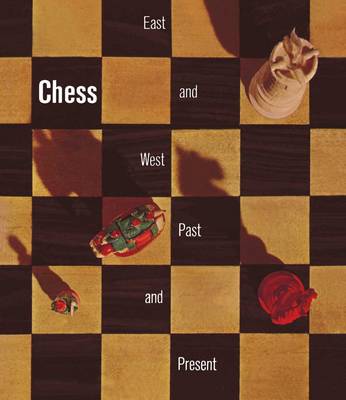Chess is a game known by name to almost everyone, and it is played the world over. In Europe and America it is known as an intellectual game with precise rules played with thirty-two pieces on a board of sixty-four squares. Even though players today may be aware that there have been some changes in the rules of the game, most of them are unacquainted with the extent of change in every aspect of chess; the board, the pieces and their names, and the manner of play. Both chess and chessmen display a truly amazing variety. An inquiry into why this is so takes us far afield and back many centuries. Chessmen, even when so crude that they can hardly be called works of art (to use the current meaning of the phrase), reflect a great deal of the time and place in which they were made. This is obviously true in the pieces made in human form, but it is also true in the so-called "conventional" pieces, which, as seen in this publication, are far more varied than most people are aware. In the representational sets we have almost a miniature world of fashion. They also reflect all sorts of historical events, reminding us especially of wars, both foreign and domestic, and of revolutions and uprisings. Some were made for purposes of propaganda: to further a favorite cause or to express disagreement with international arrangements. Conflicting ideologies, both political and religious, are shown, and even frivolous oppositions are embodied in these small objects, such as that presumed to exist between blondes and brunettes. In fact, all kinds of confrontations are manifest in chessmen, some whimsical, some meaningless, almost all reflecting the artistic fashions of the age in which they were made. They thus form a running commentary on decorative art as it changes from century to century.
The chessmen and boards illustrated in this book range from the seventh century to present and come from Europe, Asia, Africa, and America. Although all made for a single game, they give a very good idea of the diversity in the world. They formed the bulk of an exhibition titled Chess: East and West, Past and Present, shown at the Brooklyn Museum from April to October 1968, and sponsored by that museum and The Metropolitan Museum of Art. Within the selection published here, which represents about a third of the Metropolitan's chess collection, much can be learned, by examination and study, of the history of probably what is the world's most fascinating and universal game, and along with it much of the history and interrelation of various parts of the world. [This book was originally published in 1968 and has gone out of print. This edition is a print-on-demand version of the original book.]
- ISBN10 0300200579
- ISBN13 9780300200577
- Publish Date 3 September 2013
- Publish Status Cancelled
- Publish Country US
- Imprint Metropolitan Museum of Art
- Format Paperback (US Trade)
- Pages 136
- Language English
